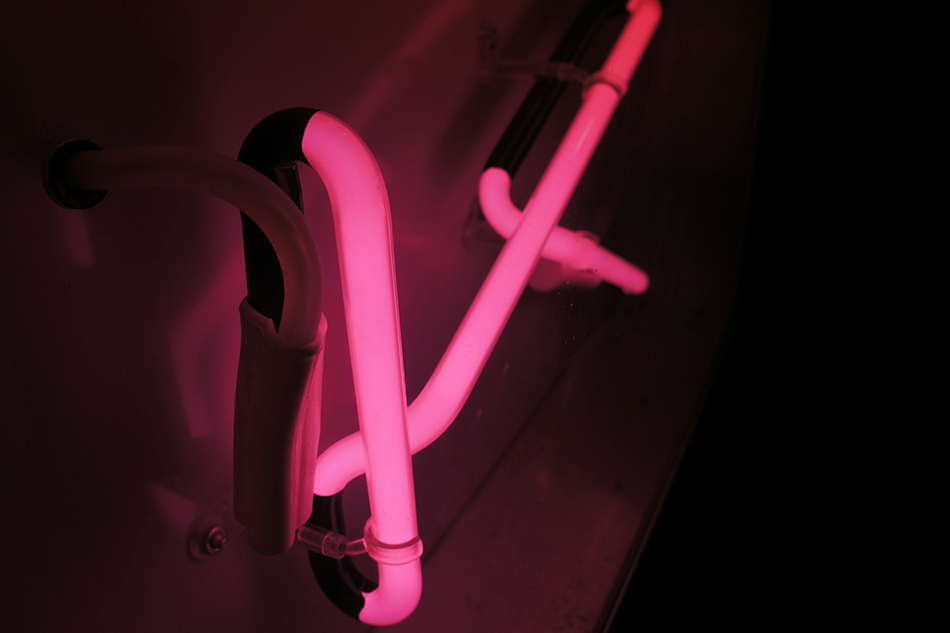Time:2025-05-22
The lighting industry is witnessing a pivotal shift toward safer, more durable alternatives to traditional glass neon tubes. Shatterproof acrylic neon light tube replacements are leading this transformation, offering the nostalgic charm of neon with enhanced resilience and adaptability. This article explores the technological advancements, strategic benefits, and diverse applications of these innovative solutions, positioning them as essential tools for designers, event planners, and commercial spaces prioritizing safety and sustainability.
The Limitations of Traditional Neon and the Rise of Acrylic
Traditional glass neon tubes, while iconic, pose significant challenges:
Fragility: Susceptibility to breakage during transport, installation, or in high-traffic areas.
Safety Risks: Sharp glass shards and hazardous gas exposure in case of damage.
Maintenance Costs: Frequent replacements due to accidental impacts or environmental stress.
Shatterproof acrylic neon tubes address these issues by:
Eliminating Breakage Risks: Durable acrylic materials withstand drops, vibrations, and impacts.
Simplifying Handling: Lightweight construction reduces installation complexity and labor costs.
Ensuring Safety: Non-toxic, non-shattering properties ideal for family-friendly spaces, schools, or public venues.

Key Innovations in Acrylic Neon Technology
Modern acrylic neon systems integrate advancements that elevate functionality:
UV-Resistant Formulations: Protection against color fading in outdoor or sunlit environments.
Flexible Design Options: Bendable acrylic tubes that mimic intricate glass neon shapes without cracking.
Energy Efficiency: LED integration within acrylic housings for lower power consumption and extended lifespan.
Modular Connectivity: Interlocking segments for customizable lengths, enabling scalable installations.
These innovations make acrylic neon a versatile choice for both permanent and temporary applications.
Strategic Benefits for Commercial and Residential Use
Cost Savings: Reduced breakage and maintenance expenses over time compared to glass neon.
Design Freedom: Ability to create complex shapes, gradients, or 3D structures unachievable with fragile glass.
Sustainability: Recyclable acrylic materials and energy-efficient LEDs align with eco-conscious building standards.
Versatility: Suitable for high-risk environments like sports arenas, transit hubs, or children’s play areas.
Applications Redefining Industry Standards
Retail Displays: Durable signage for storefronts or window displays in bustling urban areas.
Event Decor: Safe, portable installations for festivals, weddings, or trade shows.
Architectural Accents: Weather-resistant neon outlining building contours or landscape features.
Art Installations: Collaborative projects in public spaces where vandalism or accidents are concerns.
For instance, a London museum replaced its glass neon exhibits with acrylic versions, reducing maintenance costs by 60% while preserving aesthetic integrity.
Trends Driving Acrylic Neon Adoption in 2024
Smart Lighting Integration: Acrylic tubes with embedded sensors for color-changing effects via app control.
Circular Economy Models: Suppliers offering take-back programs to recycle acrylic components.
Biophilic Design: Combining neon with natural materials like wood or stone for organic-modern aesthetics.
Hybrid Material Research: Development of self-healing acrylic coatings to address minor scratches autonomously.
Selecting the Right Acrylic Neon Supplier
Critical factors to evaluate:
Material Certifications: Compliance with fire safety (e.g., UL94) and impact resistance standards (e.g., IK ratings).
Customization Capabilities: Ability to produce bespoke colors, opacities, and tube diameters.
Warranty and Support: Coverage for UV degradation, manufacturing defects, or color consistency.
Ethical Sourcing: Transparent supply chains prioritizing recycled or low-carbon acrylic production.
Overcoming Implementation Challenges
Perceived Aesthetic Trade-offs: Educating clients on achieving glass-like luminosity with advanced acrylic finishes.
Thermal Management: Ensuring proper heat dissipation in LED-integrated systems for prolonged durability.
Market Education: Demonstrating ROI through case studies comparing long-term costs of acrylic vs. glass neon.
Case Studies: Acrylic Neon in Action
Airport Wayfinding: An international airport replaced glass neon directional signs with acrylic, reducing annual maintenance by 45%.
Interactive Art Exhibit: A Berlin gallery used shatterproof neon tubes for a touch-sensitive installation, enabling visitor interaction without safety concerns.
Outdoor Festival Lighting: A music festival in California employed UV-resistant acrylic neon arches, surviving desert winds and attracting 20,000+ social media tags.
Future Directions in Acrylic Neon Development
Self-Cleaning Surfaces: Hydrophobic coatings to repel dust and moisture in outdoor settings.
Augmented Reality (AR) Synergy: QR-enabled acrylic tubes that activate digital content when scanned.
Carbon-Neutral Production: Partnerships with bio-acrylic innovators using plant-based feedstocks.
Conclusion
Shatterproof acrylic neon light tube replacements are redefining the lighting landscape by merging safety, durability, and creative potential. As industries prioritize risk reduction and sustainability, these systems offer a future-proof solution that retains the nostalgic appeal of neon while addressing modern challenges.
For designers and businesses, adopting acrylic neon is not just a practical choice—it’s a strategic investment in longevity, safety, and environmental responsibility. By collaborating with forward-thinking suppliers, stakeholders can illuminate spaces with confidence, knowing their projects are built to last.